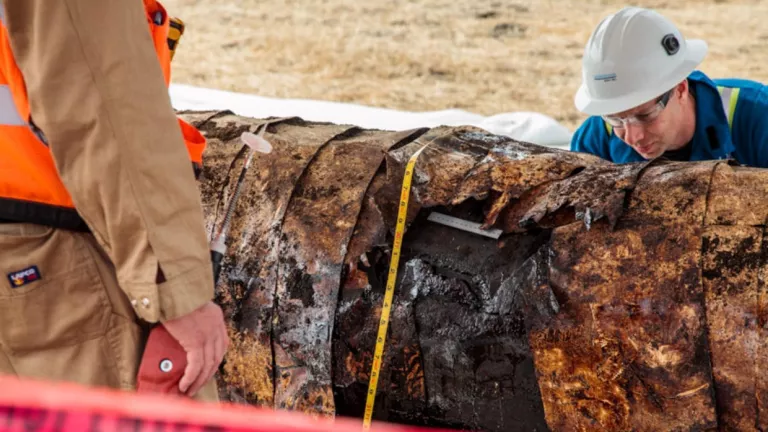By Katie Davis, Chapter Chair, Santa Barbara-Ventura
The game is afoot
On March 1st dozens of public commenters spoke in opposition to Plains All American Pipeline’s project that would install safety valves and pave a way to restart oil production along the Gaviota Coast.
Commentors explained that adding safety valves is fine; however, adding them to restart offshore oil and transport it through an old, leaky pipeline that caused a massive oil spill is not.
The Refugio oil spill in May 2015 shut down fisheries and beaches and killed hundreds of marine animals. It also shut down Exxon’s oil production in the Santa Barbara Channel for the past eight years.
Sierra Club volunteer Bill Woodbridge shared a picture of the corroded pipeline and said, “This is comparative to putting new tires on a semi truck and trailer that has decrepit, old, rusted-out breaks, putting in on the freeway at 60 mph and seeing how fast it crashes.”
Surprise Start
The proposal came as a surprise to many as the pipeline was widely considered unusable, and the County had previously tried to prohibit its use through the legal system.
In 2018 Plains was criminally convicted of negligence in failing to maintain the pipeline, which was constructed in a way that caused extensive corrosion. At the criminal sentencing in 2019, County Deputy District Attorney Kevin Weichbrod asked for a $1.2B fine and a probation that would bar Plains to restart the pipelines or even threaten to do so.
The judge agreed with the points but found that he could only impose a $3.3M fine and couldn't impose probationary requirements because there was no way to enforce them.
Exxon and Plains had seemed to agree that the pipeline is unsafe and impossible to fix, which is why they proposed trucking the oil and building a new pipeline instead. Trucking the oil was rejected by the county due to the risk of spills and fires from hundreds of tanker trips on windy roads, notably Highways 101 and 166.
The Game
Exxon’s latest plan seems to be restarting the line but avoid the liability of doing so.
It wants to acquire ownership of the pipeline from Plains, then financing the sale of it and their whole offshore operation to a speculative, blank check company called Sable.
By loaning the money to this new entity, Exxon would pass off ownership and liability to a smaller firm that could declare bankruptcy and dissolve in the event of another disaster.
That would leave us with the mess and the bill.
After hours of public comment, planning commissioners agreed that if adding valves leads to restarting the pipeline, then a lot more environmental review needs to be done. Commissioner John Parke also said that restarting would cause a massive increase in the county’s greenhouse gas emissions as Exxon had been the largest facility source of pollution in the county.
It’s Still Afoot
Planning staff will come back on April 26 with options for more environmental review and possible denial.
Activists want to see the project denied and decommission the damaged and ill-designed pipeline that caused the 2015 Refugio oil spill.
The County could also deny or condition the transfers in ownership to Sable so that Plains and Exxon maintain responsibility for decommissioning their oil pipelines and platforms.
They can afford it, but we cannot.
As the UN Secretary General recently said, “It is immoral for oil and gas companies to be making record profits from the current energy crisis on the backs of the poorest, at a massive cost to the climate.”
The Gaviota coast is a unique, biodiversity hot spot, worthy of special protection. The spill from this pipeline caused millions of dollars of economic damage. It shut down or tarred beaches all the way to Orange County. Hundreds of dolphins, seals, sea lions, pelicans and other birds and animals washed up dead.
We have learned the lesson from too many oil spills, and there should be no second chances for this pipeline and its negligent owners.

Some Good News
Getting off oil is good for us.
California’s electric cars are already leading to improvements in air quality and health outcomes. A study published in February in the journal Science of the Total Environment found that in California, every 20 zero-emissions vehicles per 1,000 people in a given zip code led to a 3.2 percent drop in the rate of emergency room visits due to asthma.
Energy benefits expanded when the County of San Luis Obispo voted 3-2 on March 21 to seek membership in Central Coast Community Energy. Sierra Club members commented in support, citing the benefits of more local renewable energy, and money for EVs, electric school buses, appliance rebates and more. SLO will join Santa Barbara County and others in the expanded agency. Ventura County is also in a similar community choice energy coalition.